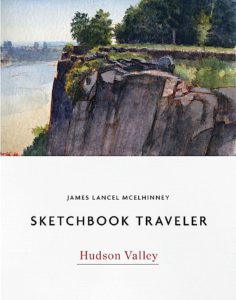The world we have known never be the same. We can beguile ourselves with the vain hope that things will return to normal, forgetting that the world has always been in flux. Human evolution has been driven by geological upheaval, climate change and plagues. Calamities like COVID-19 remind us of the fragility of life, the durability of the human spirit. For the first time in the history of the planet, a unique intelligent life-form has been focused on a single natural disaster, in real time, at the same moment in time.
Making lemonade out of bitter fruit, these quotidian posts are offered as messages of hope, not just for our own survival, but as motivation to turn our attention to the world around us, to treasure what we had previously taken for granted, to draw strength, wisdom and compassion from deeper engagements with nature.
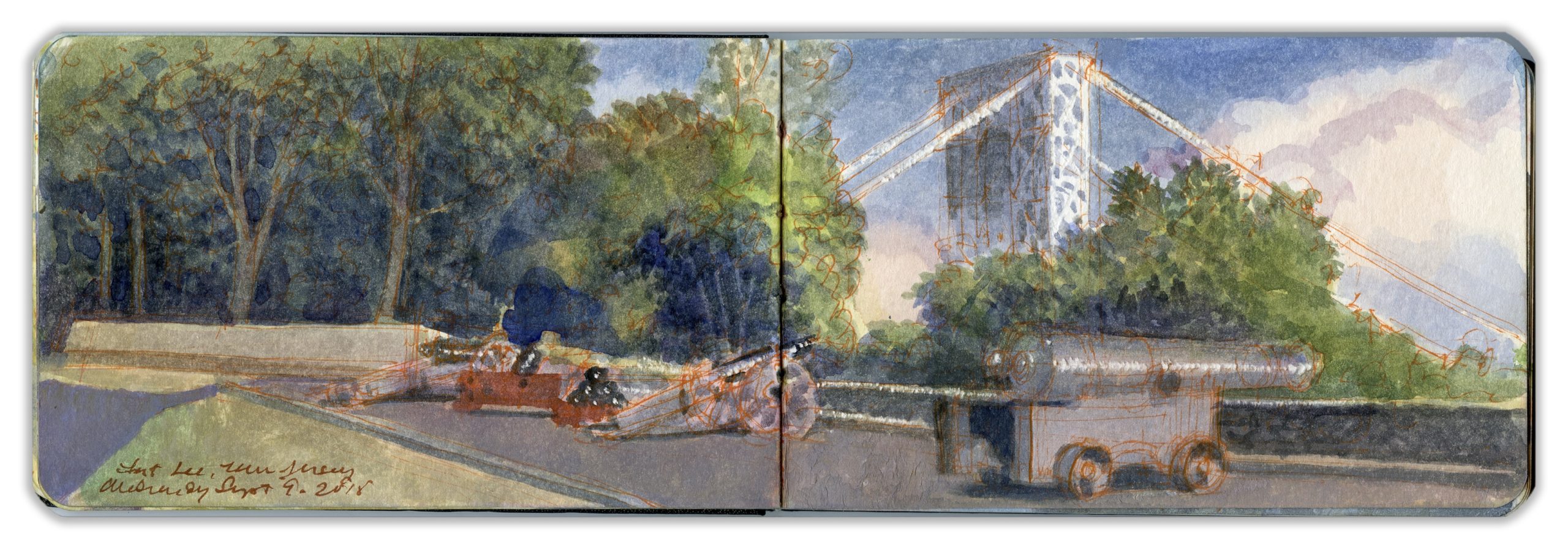
Reconstructed Revolutionary War Battery, Fort Lee.
The southern end of a basalt diabase sill known as The Palisades had been fortified in the summer of 1776, in anticipation of an invasion by British Forces. Armed with several batteries of cannon, the earthen fort projected fields of fire across the Hudson to the east, while Fort Washington stood on the highest point on the island of Manhattan, its guns facing westward. A chevaux-de frise of sunken ships had been placed in a row across the river, from Jeffrey’s Hook to the foot of the cliffs below Fort Lee.
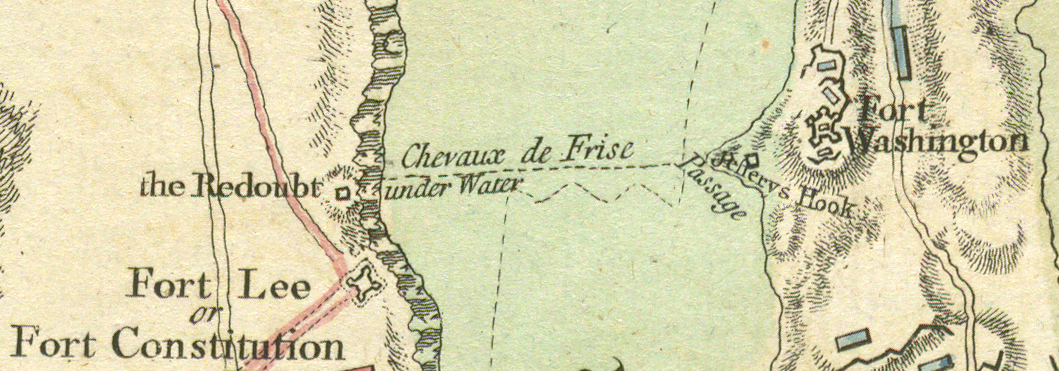
Disposition of Forts Lee and Washington (Knyphausen), 1777. The roadway leading north from Fort Lee exists today as The Long Path.
Today’s George Washington Bridge stands directly above the remains of this obstacle. On November 16, 1776, helpless and frustrated, George Washington looked across the river, as British and Hessian troops overran the fortification that bore his name. Four days later, Charles Lord Cornwallis led British regulars up a cleft in the escarpment at to cut off Washington’s line of retreat. The maneuver failed. Five weeks later Washington and the remainder of his army captured the Hessian garrison at Trenton, New Jersey, striking a blow for independence.
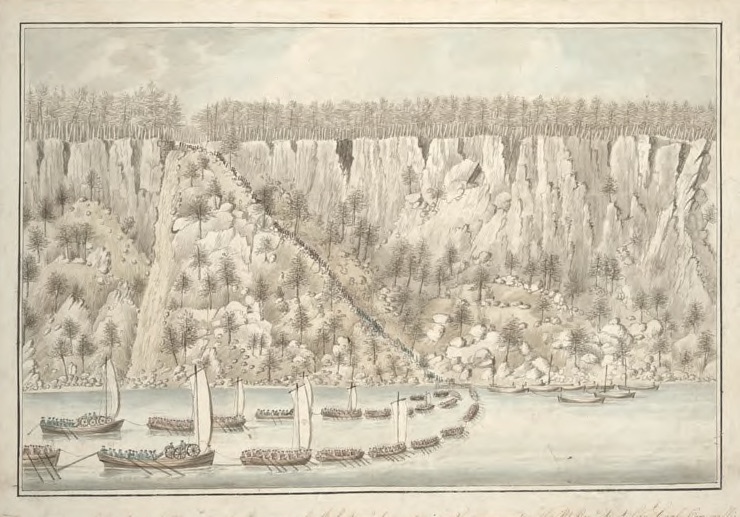
British troops under Charles Lord Cornwallis scaling the Palisades in pursuit of Washington. November 20, 1776. Watercolor by Captain Thomas Davies, Royal Artillery. Collection New York Public Library map division. (Reproduced under fair use)
The George Washington Bridge opened in 1932. During its construction, a ditch was carved through the basaltic diabase cliffs to accommodate the roadway. In 1937 the states of New York and New Jersey created the Palisades Interstate Park Commission, with Monument Park (Fort Lee) as its southernmost terminus. For the bicentennial of the American Revolution in 1976, the access-road was improved. An interpretive center was built, with adjoining parking-lots. Earthworks were restored to recreate the feeling of an eighteenth-century fort.
I first visited the site on January 2, 1991. The entry-gate had a woebegone appearance. The park drive snaked its way up a short rise, leading to parking-area and visitor center. There was no sign of life. A long trail led to the southernmost overlook, from which one scans Manhattan’s western shore down to the harbor. Views of the western banks of the Hudson reach down to Weehawken, site of the infamous Burr-Hamilton duel. Rebuilt for the Bicentennial with lawn-timbers and earthen fill, mock artillery positions ran from north to south through wooded heights just behind the precipice. Fiberglass panels simulating fascine revetments were cracked and disintegrating. The fort once again was falling to ruin. The effect was doleful and desolate. Litter, soda-cans and cigarette butts lay scattered about among the dead leaves.
Preceding Hollywood as the center of film production during the early years of silent cinema, Fort Lee had been the headquarters of Fox Film Corporation. Ashcan School artist Everett Shinn worked in the movie business. Young Thomas Hart Benton found odd jobs appearing as an extra, or working as a grip in silent films. By the twenties, film studios relocated to Southern California. Shooting in open lots, sunshine and warmer climate increased their productivity.
Monument Park was deserted as I returned to my vehicle. With the onset of twilight, it seemed best to avoid nefarious company.
Thirty years later, the park has been reborn, with many improvements and increased visitation. Observing the anniversary of the Battle of Fort Washington, living historians gather each year to interpret the Revolutionary-War period with demonstrations of drill, cooking, musket and cannon-firing. Discharging the thirty-two-pounder rattles windows and sets off car-alarms in Manhattan.
Painting at Fort Lee a few years ago I noticed two Korean women speed-walking. Spotting me, they slowed to a halt then wandered up, peering over my shoulder. I looked up and smiled.
They smiled back.
“Any questions?” I asked.
“Yes” said the older one. “Are you married?”
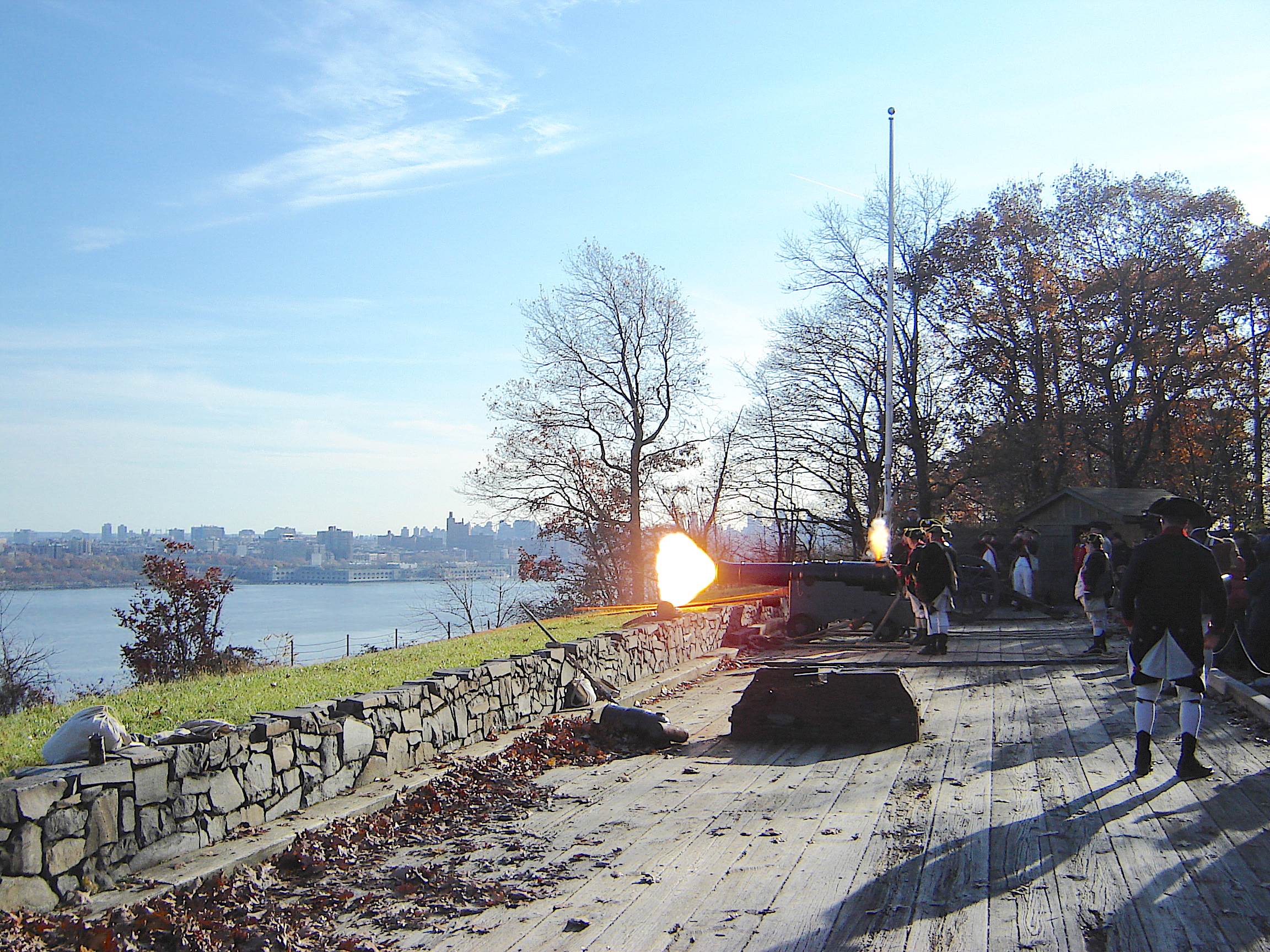
Firing the 32-pounder at Fort Lee. November 21, 2010.
(Image and text were featured in the exhibition James McElhinney. Discover the Hudson Anew, curated by Laura Vookles. Hudson River Museum. Yonkers, New York. September 13, 2019 to February 16, 2020. Published also as a limited-edition in Hudson Highlands. North River Suite Volume One. Needlewatcher Editions. New York. 2018)
(A preview of SKETCHBOOK TRAVELER by James L. McElhinney (c) 2020. Schiffer Publishing).
Copyright James Lancel McElhinney (c) 2020 Texts and images may be reproduced (with proper citation) by permission of the author. To enquire, send a request to ed******@ne***********.com
